Day 1 :
Keynote Forum
Russell Jaffe
Chairman and CEO PERQUE Integrative Health USA
Keynote: Rethink Health: Standardized herbs personal predictive biomarkers interdependent sustainability
Time : 10:00-10:45
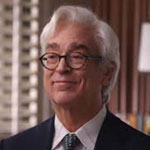
Biography:
Russell Jaffe received his BS, MD and Ph.D from the Boston University School of Medicine in 1972 and residency in clinical chemistry at the National Institutes of Health (1973 – 1976). He is board certified in Clinical and Chemical Pathology and has considerable expertise in Traditional Chinese Medicine, acupuncture, active meditation, homeopathy, and manipulative arts. Dr. Jaffe started the Health Studies Collegium, a think tank that focuses on sustainable solutions to global health needs and is the Lab Director of ELISA/ACT Biotechnologies that offers the only lymphocyte response assay for detecting delayed hypersensitivities and is CEO of PERQUE Integrative Health, a company that offers the world premier nutraceuticals and scientifically proven, integrative health solutions speeding the transition from sick care to healthful caring.
Abstract:
Epigenetics includes everything that our habits and life style influence and by which individuals are influenced. The consensus from the National Institutes of Health, World Health Organization and Institute of Medicine is that 92% of lifetime health is due to the details of what people eat, drink, think and do. More recent studies confirm how quickly the metabolism (metabolome) and digestion (microbiome) are modified when consumption, activity, attitude and environment are modified. Treatment outcomes based on symptoms suppressed are more costly and less effective than those based on promoting the causes of good health and avoiding the consequences of ill health. Beginning with the fundamentals, this presentation will discuss 8 validated functional predictive biomarker tests. The emphasis on these tests brings out the importance attached to physiology, fundamental to traditional healing in charting out the course of a healthy life now and in the future; pillars of a personalized, evidence based practice today. Resources will be highlighted to facilitate the learning curve for those interested in a modern ReThink Health look at herbals as part of the cost and outcome effective solution set to the conventional sick care/healthcare systems. From Gerard’s Herbal to Commission E Monographs to Jim Duke’s compendium (http://www.ars-grin.gov/duke/) and from Mark Blumenthal’s American Botanical Council (http://abc.herbalgram.org/site/PageServer to lymphocyte response tests for immune responses to herbs, this presentation highlights resources and opportunities to use better quality herbals in quality assured systems. Emphasis will be on documenting the value of health promotion (or risk reduced) through use of smart, convergent technologies- high sensitivity predictive biomarker tests. We will also talk about the Alkaline Way program- a lifestyle modality which combines with predictive biomarker tests and self-assessments and aims to serve as an individual’s health promotion plan for functioning better today and living better tomorrow. When applied through health coaches, proactive health professionals, through media and public service announcements, this approach, fully implemented, can save 10 million lives over a decade and add $80 trillion to the country’s balance sheet.
Keynote Forum
Ian Ferguson Hamilton
Ian Ferguson Hamilton, Art and Homeopathy Group, UK
Keynote: The role of artistic expression in deciding on a homeopathic prescription with special reference to working with practicing artists
Time : 10:45-11:30
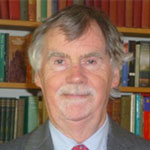
Biography:
Ian Ferguson Hamilton has been teaching and is in Homeopathic Practice since 1989 with successful practices in all parts of the UK. He was Editor of The Homeopath for nearly 5 years and is the Founder of the Art and Homeopathy Group.
Abstract:
A homeopath, to be able to perceive this totality of symptoms, has to be patient, gentle, tolerant and forbearing and this is where art comes in. He must observe and perceive more particularly the symptoms that the patient unknowingly tries to conceal, because he cannot relate nor has knowledge of how homeopathy works. Altered states like actions, sensations, emotions, behaviors and feelings that the patient would not normally have in healthy state are the true evidence of disease as told by Samuel Hahnemann, Organon of the Medical Art. My work with a variety of patients and working with members of the group has shown that, in addition to the accepted methods of case taking and anamnesis, the focus on the patients’ artistic expression reveals the altered states as evidence of disease, which Hahnemann refers to. This is based on the notion that most case taking produces what I refer to as the Archetypal state. This is often the basis of a partially curative prescription. The truly curative prescription arises from the deep hidden language of expression – their passion - which the patient often unknowingly conceals. I will be presenting illustrative cases as evidence of this remarkable thesis, showing true deep healing of a variety of physical and emotional disorders, in a series of follow ups. A variety of artistic expressions will be evident as the range of the method.
Keynote Forum
Sunita Amruthesh
Buddha Institute of Dental Sciences & Hospital, India
Keynote: Vedic dentistry: Its relevance in modern age
Time : 11:45-12:30
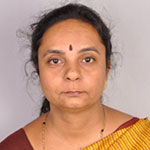
Biography:
Sunita Amruthesh is a Professor and Head of Department, Department of OMR (Buddha Institute of Dental Sciences & Hospital), Patna, Bihar, India. She has been involved in Undergraduate & Postgraduate teaching since 20 years and has 8 national and international publications to her credit especially on Integrating Ayurveda with Dentistry. She has co-authored text books in oral medicine & radiology. She has conducted various research projects in collaboration with government & private organizations. She was sponsored by the AYUSH and has represented the nation and presented a paper on “Application of Indigenous Drugs in Oral Diseases” at The First International Ayurveda Congress at Klagenfurt, Austria in October 2010. Further, she was also sponsored by the DST and presented a paper on “Tuning the taste in taste disorders” at the 8th World congress of IBMISPS at San Francisco in June 2011. She has been a pioneer in integrating alternative therapies in mainstream medicine and hence striving for revival of the ancient system and mother of all healing “Ayurveda”.
Abstract:
Chochrane’s collaborations’ definition of Complementary Alternative Medicine (CAM) is a broad domain of healing resources that encompasses all health systems, modalities and practices and their accompanying theories and beliefs other than those intrinsic to the politically dominant health system of a particular society or culture in a given historical period. One important such medicinal system is Ayurveda (Ayu-logevity and Veda-knowledge) which is an ancient multifaceted healthcare system being practiced in India for more than 5000 years. It is the holistic and systematic approach to total healthcare that can easily be integrated into current therapies of mainstream medicine; the potential benefits being great patient satisfaction and a decrease in national healthcare cost, addressing demands not met by orthodoxy especially the lack of consideration of the whole person. Ayurveda was discussed in all the 4 indigenous books of spiritual knowledge viz. Rig Veda, Sama Veda, Yajur Veda and more so in Atharva Veda. Health has been defined as “Samadosha Samagnischa Samadhatumalakriyaha Prasannathmendhya Manaha Swasthadhyabhidheeyate”. It deals with diagnosis, management and treatment based on balancing the equilibrium among all the components of health namely (1) Dosha {bodily humour, morbific diathesis}, (2) Agni {digestive fire}, (3) Dhatu {tissue}, (4) Mala {waste products}, (5) Prasanna Atma {soul}, (6) Indriya {sense organs} and (7) Manha {mind}. Other important concepts of Ayurveda are (i) Panchabhutas, (ii) Ama (unwanted, unripe byproducts of digestion & metabolism accumulating in the body at different levels acting as autotoxins &antigenic materials), (iii) Ojas (factor of immunity in terms of “Vyadhiksamatva” the natural or acquired biological powers of an individual protecting them from disease), (iv) Rasas {6 types of taste viz. madhura (sweet), amla (sour), lavana (salty), katu (pungent), tikta (bitter), kasaya (astringent)} on which the choice of drugs depends. The diagnosis, prevention and treatment of various diseases is by Dashavidha Pariksha (ten-fold examination), advocacy of lifestyle changes; use of medicines of plant, animal and mineral origin; the Panchkarma & Rasayana therapeutic procedures, etc. This presentation deals with the etio-pathogenesis, basic principles, managenement aspects of Ayurveda in general along with management of some dental diseases. The material medica describes the properties of the drugs essential to the maintenance of health and strength as having 5 properties: (1) Rasa, (2) Guna, (3) Virya, (4) Vipaka and (5) Prabhava, which lenses alone cannot reveal nor the body’s eyes after observation and experiment made upon rats and rabbits.
- Recent advances in Herbs and Natural Remedies
Ayurveda-The Science of Eight Components
Homeopathy & Traditional Medicine
Antimicrobial and antifungal properties of plants and essential oils
Herbals in cancer therapy
Session Introduction
Hawa ZE Jaafar
Universiti Putra Malaysia, Malaysia
Title: Involvement of elicitated Labisia pumila Benth. biofluids in the alleviation of chemotoxicity effect and antitumor activity
Time : 12:30-12:50
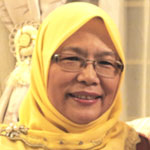
Biography:
Hawa ZE Jaafar completed her PhD in 1995 from Nottingham University, United Kingdom in the area of Plant Environmental Physiology. She is very active both in environmental manipulation of herbal secondary metabolism research, and in community development of herbal materials and products. Currently, she is the Director of the University Community Transformation Centre (UCTC) UPM, and a member of the National Herbal Implementation Committee. She has published about 150 papers mostly in high impact journals, more than150 other articles in bulletin, monographs, books and chapters, and presented more than 130 papers nationally and abroad. She is very active in professional activities as a President, Vice President, Chief Editor and Editorial Member. She is also very involved in the development of Roadmap of the National Herbal Industry in Malaysia in 2010. She established the Controlled Environment System in Malaysia in 1991, and had assisted Sana’a University Yemen to establish the Protected Agriculture Centre (2006-2010).
Abstract:
Phytochemicals derived from plant sources such as phenolics, flavonoids, alkaloids, saponin, tannin and lignin are promoted for the prevention and treatment of many health conditions, including cancer, heart disease, diabetes, and high blood pressure. Recent scientific attention has been directed towards the cancer preventive potential for naturally occurring constituents of antioxidant, vitamins, flavanoids, glucosinolates and organosulfur compounds that have anticarcinogenic or antioxidant potential. Plants products are regarded as potential chemopreventive agents acts to block, reverse or prevent the development of invasive cancers. As plants are generally very responsive to biotic and abiotic factors in altering their physiological, biochemical and morphological properties, exposing herbal plants to elicitors may induce, alter or enhance synthesis of secondary metabolites. Recent work on the use from elicitated local herb biofluids in the alleviation of chemotoxicity effect demonstrated enhanced protective nature of elicitated L. pumila especially on white blood cell and organ weight, and with greater anti-tumor activity in comparison to CPT-11 drugs-treated BDF-1 mice
Mary Gillian Vellet
Registered Massage therapist and Registered Psychotherapist, Canada
Title: Facilitation of body mapping and manual lymph drainage with phyto-rx and healium essential oils is a holistic and body-centered approach to treating diverse conditons.
Time : 12:50-13:10

Biography:
Gillian has an interdisciplinary background in fine art, art education, dance, art psychotherapy, massage therapy, manual lymph drainage, and essential oils. She,received a Bachelor of Fine Art, Honours Degree in 1989 from the University of the Witwatersrand, Johannesburg, South Africa. Her personal fine art process explores the sacred interrelationship between nature and culture. Gillian is passionate about building a culture of empathy which respects emotional intelligence, diversity, expressive arts therapies, resiliency, and creative learning processes. In 1995 Gillian moved to Toronto, Ontario, to train in Art psychotherapy at the Toronto Art Therapy Institute (TATI). In 1998 she returned to Johannesburg and worked in Art psychotherapy private practice for 8 years. During this time she trained and qualified in Biodanza - a community building integrated dance movement process. In 2005 she heeded the call of spirit to return home to London, Ontario, Canada and reconnect with her ancestral heritage. Gillian trained in Massage therapy at London Medix School and became a registered Massage therapist in October 2008. She is currently working in dual practice as a registered Art psychotherapist and Massage therapist working with children, adolescents, adults, couples, parents, and elderly. Gillian facilitates the creative and body-centered approach of "Body Mapping Creative Change" which explores personal and collective identity and health concerns in conjunction with the Massage therapy technique of Manual lymph drainage with Phyto-Rx and Healium essential oil blends in separate one hour sessions. This creative synergy detoxes the waters in the body and deeply harmonizes the nervous system. Gillian's purpose and holistic vision is to help people find peace and learn to self-regulate energy in a technological culture full of stressful over-stimulation. She creatively integrates the heart with the wisdom of the body, mind, spirit, and soul.
Abstract:
"Body Mapping Creative Change" and the Massage therapy technique of Manual lymph drainage (MLD) with Dr. Mila Emerald's Phyto-Rx and Dr. Earle Sweet's Healium essential oil blends facilitate safe somato-emotional release of negative subconscious emotions, sensations, thoughts, stress, and trauma in the 'pain body'. Together this combination of modalities detox a congested lymph system; purify the waters: clear negative subconscious energetic blockages; transform the 'pain body'; deposit immune cells; neuro-balance and harmonize the nervous system; reduce acute/chronic pain, inflammation, and muscle/visceral spasms. "Body Mapping" uses material diversity to stimulate sensory-motor neurons in the fingers through drawing an image which represents your 'self-image' and/or 'identity'. This neurological activation in the fingers translates up into the spinal cord and somatosensory cortex (parietal lobes) of the brain. As a result, creativity supports a ‘relational neuroscience’ integrating right and left brain functioning alongside strengthening the emotional experience of being listened to, 'compassionate inquiry', and ‘empathy’ within the therapeutic relationship. The client is empowered to make wise and healthy choices that result from listening to the body's wisdom and being willing to creatively change and make meaning out of medical concerns. The inclusion of Phyto -Rx and Healium essential oil blends with MLD and Heat and/or Cold Hydrotherapy more rapidly detoxes cellular, organ, lymph, brain, and energetic levels. This ancient protocol increases dermal penetration of the plasma membrane with deeper skin absorption into the bloodstream and brain. As a result, there is decreased anxiety and depression; increased focus and concentration; dissolution of lung fibrosis; increased diaphragmatic breathing without bronchial spasms; increased sinus drainage; reduced fascial adhesions; increased scar tissue mobility; decreased fibrocystic breasts; increased immunity; safe, natural, anti-fungal, and anti-inflammatory restorative option for cancer prevention and recovery. The scent of essential oils elicits a powerful positive emotional and self-caring response of 'feeling good' in the body; and demonstrates the effectiveness of pure, organic, and natural herbal remedies. Scent is easily inhaled and opens lung alveoli to reduce lung fibrosis and scarring due to a history of asthma. Scent also stimulates the olfactory system which is closely connected to the limbic brain or neural circuitry underling anxiety and fear: (ie. hippocampus - long- term memory; amygdala - emotions; hypothalamus - autonomic nervous system and hormones; and cingulate gyrus - regulates blood pressure, heart rate, and attention). It is for this reason that essential oils have such a profound calming, neuro-balancing, and regulating effect on the physiological, visceral, emotional, psychological, and energetic systems. "Body Mapping" and MLD with Phyto-Rx and Healium essential oil blends is effective in the treatment of egs: anxiety, depression, PTSD, Bi-polar personality disorder, ADHD, learning disability, grief, hypersensitivity, digestive problems, IBS, emotional eating disorder, sexual abuse, whiplash, DDD, asthma, sinusitis, scoliosis, trauma of being bullied, mastectomy, lumphectomy, lymphedema, lipedema, and cancer recovery. Gillian will present 3 case studies to demonstrate the effectiveness of "Body Mapping" and MLD with specific Phyto-Rx and Healium essential oil bends with a 14 year old girl with eczema; 46 year old woman and mother living with lipedema and lymphedema; and 56 year old woman and mother in cancer recovery.
Pallavi Lavhale
RamEesh Institute of Vocational and Technical Education, India
Title: Preparation and Physicochemical characterization of ingredients of Indian Traditional Medicine, Mahamrutyunjaya Rasa
Time : 14:10-14:30
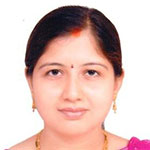
Biography:
Pallavi Lavhale completed her M.Pharm., Ph.D. from The M.S. University of Baroda, Vadodara, Gujarat, India in 2010. Presently, she is working as Associate Professor and Department Head (Phytochemistry and Pharmacognosy) at RamEesh Institute of Vocational and Technical Education, Greater Noida. Pallavi has expertise in the field of phytochemistry, quality control and standardization of herbal/ayurvedic formulations, analytical method development-validation for herbal/ayurvedic formulations and intellectual property rights. She has published a number of papers in national and international journals and participated in a number of conferences.
Abstract:
Mahamrutyunjaya rasa is an ayurvedic formulation used in the treatment of cardiac disorders. It contains roots of Aconitum ferox, Solanum indicum, fruits of Piper longum, Piper nigrum, Sulphur, Cinnabar and sodium metaborate. As per traditional literature (Bhaishjaya Ratnavali), some raw materials need purification (shodhana) before incorporation in the formulation. This work presents a comprehensive physicochemical characterization of raw materials, intermediates and the final product obtained during purification, using modern analytical techniques. The Fourier transform infra-red spectroscopic analysis of the alkaloidal extracts of Aconitum ferox showed loss of an ester group with shift in the peaks from 1720 cm-1 (C=O stretching of esters) to 1676 cm-1 (C=O stretching of Ketone) which signifies the conversion of alkaloid Aconitine (LD50 - 0.08mg/kg) to Benzoylaconine (LD50 - 24mg/kg) improving its safety. The analysis of sulphur by X-ray diffraction and Differential Scanning Calorimeter showed that purification brought about transformation of orthorhombic sulphur into monoclinic sulphur and it reverted back to original form with higher purity. The treatments given to sulphur and cinnabar with organic compounds made them homologous to the body tissues. Analysis of purified sodium metaborate showed that the processing led to loss of water and slight change in the crystal structure with the shift in the endothermic peak from 110.6°C to 104.2°C. Thus, the present study provides a scientific backing to the methodologies used by Ayurvedic practitioners. The study also provides physicochemical fingerprints for the standardization as well as characterization of raw materials and forms a technical platform for manufacturers to develop quality control standards.
Joanna Rogister
Life Stages Holistics, Canada
Title: Safe, effective, natural: overcoming ADD/ADHD with homeopathy
Time : 14:30-15:15

Biography:
Joanna Rogister is a Homeopath and a Registered Holistic Nutritionist with Life Stages Holistics. The combination of Homeopathy and Nutrition together allow Joanna to help her patient’s attain balance within their lives while maintaining that success with nutrition. Introducing the connection between the mind and the body utilizing a variety of therapies brings achievement of long term health. Joanna specializes in dealing with health issues associated with different life stages, in particular menopause, andropause, chronic degenerative diseases and ADD/ADHD.
Abstract:
The rate at which ADD/ADHD is diagnosed and prescribed for is growing at an alarming rate each year. Between 2007 and 2011, physicians prescribed powerful psychiatric drugs at an increased rate of 28% despite the fact that studies show that the most commonly prescribed medications have little or no effect in the long term. Homeopathic remedies, which are prescribed based on the individual’s mental, emotional and physical symptoms rather than the diagnosis, are proving to significantly reduce the symptoms that patients are experiencing. Results are often seen within days with long term results demonstrating noteworthy reduction of all symptoms utilizing remedies that are completely natural and safe. Employing research results and case studies, the success of homeopathic remedies in treating these disorders can be demonstrated to bring about change in existing treatment protocols and improving the health of young and old with this disorder.
Muhammad Tayyab Akhtar
University Putra Malaysia, Malaysia
Title: Metabolic changes in obese diabetic rats treated with ‘Andrographis paniculata’ extract determined by 1H NMR-based metabolomics
Time : 15:30-15:50

Biography:
Muhammad Tayyab Akhtar has done his PhD in 2013 from Leiden University, Netherlands. During his PhD research, he used zebrafish as a model organism to study the toxicological, behavioral and metabolic effects of cannabinoids. Currently, he is working as a post-doc researcher at Institute of Bioscience of University Putra Malaysia.
Abstract:
Diabetes mellitus (DM) is a chronic metabolic disorder characterized by high blood glucose level or hyperglycemia. It is caused either by insulin deficiency (Type 1DM) or often combined with insulin resistance (Type 2 DM). Currently, 387 million people worldwide are suffering with diabetes and this number is expected to rise to 592 million by 2035. Andragraphis paniculata (A. paniculata) is an anual herb and widely cultivated in Southeast Asian countries for its medicinal use. In recent investigations, A. paniculata was found effective against Type 1 DM. In order to test the anti-diabetic activity of A. Paniculata aganist type 2 DM. Here, we used a non-genetic out-bred Sprague–Dawley rat model fed with high-fat diet (HFD) for obesity (model 1) and combination of HFD with a low-dose of streptozotocin induced to develop an obese-diabetic rat model (model 2). Proton Nuclear Magnetic Resonance (1H NMR) spectroscopy in combination of multivariate data analyses was used to evaluate the A. paniculata and metformin induced metabolic effects on obese and obese diabetic rat models. Compare to the normal rats, high levels of creatinine, pyruvate, acetoacetate and acetate were found in the urine of obese rats. Whereas, obese-diabetic rats were marked by high glucose level, and low creatinine, 2-oxoglutarate, citrate, succinate, and hippurate levels. Treatment with A. paniculata leaf water extract (at a dose of 200 mg/kg body weight) was able to partially restore the disturbed metabolism of an obese-diabetic animal model back towards normal conditions. A. paniculata increased the levels of creatinine, alantoin, malonate and hippurate, whereas, significantly decreased the levels of glucose and taurine in obese-diabetic rats. The use of metabolomics was found to be a practical and useful approach towards understanding the effects of A. paniculata water extract on the body fluids of diabetes-induced rats.
Anirban Sukul
Sukul Institute of Homeopathic Research, India
Title: The effect of potentized mercuric chloride on alpha-amylase is transported from one test tube to another, connected through capillary water
Time : 15:50-16:10
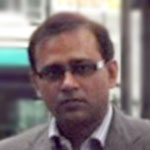
Biography:
Anirban Sukul completed his PhD from Visva-Bharati University and Research Associateship from the same University. He studied homeopathy and obtained Bachelor degree. Presently he is the Director of Sukul Institute of Homeopathic Research at Kolkata, India. He has published 22 papers in international journals and co-authored a book published by Kluwer Academic Publishers, The Netherlands. He has lectured on homeopathy in 12 countries across Europe and UK. He has been conferred the Junior Scientist Award, Life Time Achievement Award, Gold Medal Award, Man of Excellence Award etc from abroad. Dr Sukul is also Member, Liga Medicorum Homoeopathica Internationalis (LMHI), Germany
Abstract:
Earlier we showed that treatment on plant or animal with a potentized substance might affect other plants or animals connected to the former by the capillary water in cotton threads. The aim of the present study was to establish whether drug effect could be transferred in a cell-free medium. Two test tubes each containing 1ml of 1% starch solution and 1ml of α-amylase, were connected by means of wet cotton threads encased in a polythene tube. One of the tubes also contained Mercurius corrosives (Merc-cor) 30CH and the other ethanol solution (control). After 15 min, the enzyme activity was stopped with DNSA, and the breakdown product of starch, maltose was estimated. A third separate tube contained all the tested materials except for Merc-cor and the controlled solution. In a second experiment 2 tubes, one containing 1200ppm and the other 200ppm of maltose, were similarly connected over 15 min. Both the experiments were repeated 20 times. In the first experiment, the amount of maltose was similar in both connected tubes, but it was significantly lower in the unconnected tube. In the second experiment, maltose concentration in both tubes remained unchanged. The information of Merc-cor 30CH was effectively transported through capillary water between 2 tubes in cell-free medium. Water seems to the most portable carrier of information in potentized solutions.
Bhavana B Bhat
Manipal University, India
Title: Quality of Life and Clinical Efficacy of locally used polyherbal formulation among Type II Diabetes Patients
Time : 16:10-16:25

Biography:
Bhavana Bhat has completed her MPharm and MBA from Manipal University and Sikkim Manipal University respectively. She is presently working as research scholar under structured PhD programme offered by Manipal University on adverse drug reactions of herbal medicines. She has published several articles in reputed journals and also presented research abstracts in conferences. Also delivered a few talk in conferences and seminars.
Abstract:
Introduction: Ayurveda due to its special treatment methods can be an effective solution to treat diabetes patients. INSOL-N, a proprietary antidiabetic formulation containing several herbal medicines developed by Muniyal Ayurveda hospital, Manipal was found to be effective in treating diabetes. Objective: To find the clinical efficacy and improvement in quality of life among type II diabetes patients who are put on INSOL-N. Methodology: 51 diabetes patients from Udupi and Manipal, Karnataka, India who were put-on INSOL-N were included in the study. Clinical efficacy of INSOL-N was noted on Day 1, Day 15, Day 30 and Day 90 by estimating the FBS and Hb1ac level. Patients’ satisfaction to medication and Improvement in quality of life was estimated using Diabetes Mellitus Satisfactory Tool questionnaire and SF12V2 (Permission was obtained from Quality Metrics). Results: Reduction in fasting glucose level and HbA1c was up to 40% and 30% respectively for a period of 3 months. 70% of the patients were suffering from two or more risk factors. Patients’ satisfaction was calculated and was found to have improved by 44.43% from day 1 to day 90. Physical component score showed an improvement of 30.01% and mental component score showed an improvement of 52.52%. Conclusion: INSOL-N was found to reduce the blood sugar levels and HbA1c levels. There was improvement in quality of life and patients’ satisfaction during 3 months of treatment. Also mental well-being summary was better when compared to physical well-being summary. This might be due to general perception of patients’ that ayurvedic medicines were very effective with lesser side effects.
Lakshmi Huttada
Karnatak University, India
Title: Unravelling the medicinal potencies of unexploited species of Gentianaceae family - Exacum pedunculatum
Time : 16:25-16:40

Biography:
Lakshmi H V has completed her Master's degree in Biotechnology from Kuvempu University, Karnataka and presently pursuing doctoral studies in the Department of Biotechnology in Karnatak University, Dharwad, India. She worked as Senior Research Fellow in a DBT project titled “Comparative Analysis of Functional and Anonymous SNP Diversity in Legumes : PCR based direct (gene based) and indirect (marker-based) tools for Legume Genome Analysis”, in Marker Assisted Selection Laboratory, Gandhi Krishi Vignana Kendra, University of Agricultural Sciences, Bangalore, Karnataka, India.
Abstract:
Natural products and medicine have been closely linked from the ancient times through the traditional practices. Plants belonging to the family Gentianaceae are used in herbal medicine to treat various ailments. Scientific developments have allowed progress in understanding the mechanism of action of the traditional medicines. Although most herbal medicines have a long history of traditional use, only their experimental validation gives a clear idea about its safety and efficacy. Exacum Pedunculatum is phytochemically unexplored, traditional medicinal herb. Because of its bitter taste, local people used it as a remedy for diabetes and skin diseases. Present study provides a thorough assessment of the profile of the plant to ensure the rational use in diabetes management. The identification, isolation and biological studies like preliminary phytochemical analysis, Thin layer chromatography, UV-Visible spectroscopy, FT-IR, HPTLC, GC-MS, NMR studies was performed on the plant extract of Exacum pedunculatum. In vivo validation provides an indication of the relative toxicity of the plant. By anticipating potential toxicities or possible herb-drug interactions, by In vivo studies, key parameters like Adsorption, Distribution, Metabolism, and Excretion were screened for the use of plant in therapeutic management. Further, analyzing the results of the molecular composition of the extract as potential candidates for developing new therapeutic agents, implication of bioinformatic tools to predict the properties of biologically active components by docking with natural ligands was done for future studies towards therapeutic inventions of Diabetes Mellitus.
Hassan Awad Ahmed Mohamed
Saratov State University, Russia
Title: Isolation and identification of some secondary metabolites from associated apple plant fungus Aspergillus tubingensis
Time : 16:40-16:55
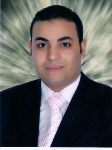
Biography:
Hassan Awad Ahmed Mohamed is a PhD student at Saratov State University, Russian Federation. He is Assistant Lecturer, Faculty of Science, Al-Azhar University, Egypt. He has already published and has attended in international conferences. Now, he is preparing to submit many publications in different journals related to Microbiology.
Abstract:
Filamentous fungi in the Aspergillus tubingensis (strain AN103) is a black Aspergillus belonging to the Aspergillus section Nigri, represent some of the most widespread food, fruits and feed contaminants known, but they are also some of the most important workhorses used by the biotechnological industry as study strain after it was isolated from golden delicious apple fields at Volga region, Saratov city, Russia. Black Aspergilli were found in 19 of 28 different apple stem samples, ranging from 10 to 45 colony forming units per 10 cm stem surface. This species morphologically resembles Aspergillus niger. Among the secreted extract components, six dimeric naphtho-g-pyrones, named Fonsecin (1), Pyranopyrrol A (2), Rubrofusarin B (3), Citreonigrin E (4), Cyclopenol (5) and a New Asperazine Derivate (6) were isolated from apple associated endophytic fungus Aspergillus tubingensis (AN103) cultivated in solid rice medium. The fungal isolate (AN103) was morphologically characterized by performing cotton blue staining and molecular characterization performed by ITS1, 4 rRNA gene sequence analysis and it was confirmed as Aspergillus tubingensis. Fungal metabolites and their structures were elucidated by spectroscopic methods, including HPLC, LC-MS- and 1H-NMR.
Sergio Andres Cabrera Navarro
SENA Regional Tolima, Colombia
Title: Antioxidant and antimicrobial potential of the hidroalcoholic and aqueous extracts of the Cholupa (Passiflora maliformis)
Time : 16:55-17:10
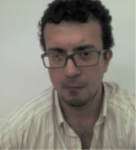
Biography:
Sergio Andrés Cabrera Navarro is an Agroindustrial Engineer and, currently, he is studying his Master’s Degree in Agrofood Science at the University of Tolima-Colombia. He is a Consultant of the nanotechnology and biotechnology line of the Tecnoparque Nodo La Granja-SENA Regional, Tolima. He has researched on bio-compounds, phytochemicals, antioxidants and antimicrobial on natural products. He has published and article related to the antioxidant and antimicrobial activity of the extracts of Granadilla (Passiflora ligularis). Currently, he supports the development of innovative prototypes for agro-industrial companies in the Tecnoparque-SENA Tolima, Colombia.
Abstract:
The Cholupa (Passiflora maliformis) is an exotic herbal-fruit, highly desired by its sensory qualities. In Colombia, the Cholupa’s crop has been mainly destined to the fresh consumption. However, the current increment of degenerative diseases among people such as cancer has proposed the Passiflora gender as an alternative worldwide for their pharmaceutical properties, which gives to the crop a promising future in the world market. The main objective of this study was to determine the antioxidant and antimicrobial activity in aqueous and hydroalcoholic extracts of Passiflora ligularis. It was used the reflux extraction method, using as solvent water, ethanol 35% (v/v) and 70% (v/v), working with leaves and flowers as plant material. The analysis demonstrated that both aqueous and hydroalcoholic extracts present phenolic compounds, achieving maximum levels of 7.35 mg Eq Ac. Gal/g dry matter. Also was determined the maximum total flavonoids equivalent to 11.94 mg Eq Vitexin/g dry matter on hydroalcoholic extracts. In vitro antioxidant activity of the extracts was evaluated using the methodology of capturing the free radical (DPPH) and Ferric Reducing Power (FRAP), in both methods was determined that hydroalcoholic extracts were more active. The corresponding test antimicrobial activity indicated that the extracts of Passiflora maliformis have the ability to reduce the growth of both E. coli (ATCC 25922) and S. aureus (ATCC 25923), mainly finding that aqueous extracts possess greater power microbial inhibition than the hydroalcoholic ones. In this study, it also was possible to identify a correlation between the phenols and antioxidant activity (FRAP).
Deepak Francis
Ariston Schol of Business Studies
Title: A studyof current status of natural herbs and medicinal plants in kerala
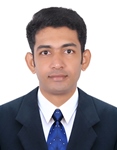
Biography:
Deepak Francis has completed his BSC at the age of 22 years from keralaUniversity and doing graduate studies from ariston school of business studies. He came from a tradional ayurvedic family in kerala. He isdoing reserach on preventive medicine for cancer and dibetics.
Abstract:
Home medical knowledge, or knowledge of how one’s surroundings can be used to maintain and restore health, can be an important tool for health self-sufficiency in rural places as well as for the ecological conservation of important plants and natural materials. The Indian state of Kerala has a rich heritage of traditional medicine, found in the historically inter-related forms of codified Ayurveda and folk knowledge. In thrissur district, a region of Kerala nestled in the hills of the Western Ghats, rural households engage in small-scale home-gardening and agroforestry, which in addition to providing nutritionally diverse food is a source of medicinal herbs and home remedies. This study interviewed 35 households in the village of peechi, Thrissur District regarding their knowledge and utilization of herbs and home-remedies. morethan 75 local plants and substances were identified as being used by villagers for medicinal purposes, to cure or prevent wide varieties of ailments. Families with extensive use and knowledge of home medicine also engaged in intensive home gardening practices which integrated their food and medicine cultivation. While a basic knowledge and use of at least a few medicinal plants in the home is nearly ubiquitous, more extensive knowledge of advanced remedies and plants is still present but quickly disappearing. Though a majority of families responded that they find natural remedies to be superior to Allopathic ones, many of these are increasingly relying on Allopathic medicines. Factors found to be contributing to this paradox include changing lifestyles, the convenience factor of Allopathy, and diminishing home-cultivation of medicinal plants.
Abiola Fatimah Adenowo
University of Zululand, South Africa
Title: Aqueous extract of Monodora myristica ameliorates cadmium-induced hepatotoxicity in male rats
Time : 17:25-17:40
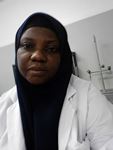
Biography:
Adenowo Abiola Fatimah is presently a PhD student at University of Zululand, Republic of South Africa. She completed her Masters’ degree in Biochemistry in College of Medicine, University of Lagos, Nigeria. She has four papers published in reputed journals.
Abstract:
This study investigates the protective effect of Monodora myristica (MM) on cadmium-induced liver damage in experimental animals. Experimental rats were divided into five groups (G1– G5): G1 was maintained on tap water only and served as the negative control, G2 – G5 were maintained on cadmium in the animals’ main drinking water for 21 days to induce hepatotoxicity. G2 served as the positive control (cadmium only); G3 and G4 were treated with aqueous extracts of MM at a dose of 200 mg/kg bw and 400 mg/kg bw respectively, G5 was treated with 20 mg/kg bw of Livolin forte (LF). At the end of the experiment, levels of hepatic enzyme biomarkers alanine transaminase, alkaline phosphatase, aspartate transaminase, total cholesterol, triacylglyceride and malondialdehyde were significantly raised in the cadmium treated groups. Conversely, cadmium treatment elicited noticeable decrease in hepatic antioxidant enzymes reduced glutathione (GSH), catalase (CAT), superoxide dismutase (SOD). Co-treatment with MM at varying doses as well as LF considerably decreased the elevated levels of the hepatic biomarkers as well as TC, TG and malondialdehyde in the cadmium-treated groups with the effect more pronounced in G4 and G5. Treatment groups (G3 – G5) also exhibited the reversal potential of MM and LF on cadmium toxicity at the tested doses as their administration was accompanied by a pronounced increase in the levels of these enzymes. These results demonstrates that aqueous extracts of MM is effective in the amelioration of hepatic damages arising from cadmium-induced toxicity, indicating that the antioxidant bio-constituents of MM play an important role in the prevention of liver toxicity possibly by inhibiting bioaccumulation of free radicals in animal models.
Russell Jaffe
PERQUE Integrative Health, USA
Title: Rethink Health: Standardized herbs personal predictive biomarkers interdependent sustainability

Biography:
Russell Jaffe received his BS, MD and Ph.D from the Boston University School of Medicine in 1972 and residency in clinical chemistry at the National Institutes of Health (1973 – 1976). He is board certified in Clinical and Chemical Pathology and has considerable expertise in Traditional Chinese Medicine, acupuncture, active meditation, homeopathy, and manipulative arts. Dr. Jaffe started the Health Studies Collegium, a think tank that focuses on sustainable solutions to global health needs and is the Lab Director of ELISA/ACT Biotechnologies that offers the only lymphocyte response assay for detecting delayed hypersensitivities and is CEO of PERQUE Integrative Health, a company that offers the world premier nutraceuticals and scientifically proven, integrative health solutions speeding the transition from sick care to healthful caring.
Abstract:
Epigenetics includes everything that our habits and life style influence and by which individuals are influenced. The consensus from the National Institutes of Health, World Health Organization and Institute of Medicine is that 92% of lifetime health is due to the details of what people eat, drink, think and do. More recent studies confirm how quickly the metabolism (metabolome) and digestion (microbiome) are modified when consumption, activity, attitude and environment are modified. Treatment outcomes based on symptoms suppressed are more costly and less effective than those based on promoting the causes of good health and avoiding the consequences of ill health. Beginning with the fundamentals, this presentation will discuss 8 validated functional predictive biomarker tests. The emphasis on these tests brings out the importance attached to physiology, fundamental to traditional healing in charting out the course of a healthy life now and in the future; pillars of a personalized, evidence based practice today. Resources will be highlighted to facilitate the learning curve for those interested in a modern ReThink Health look at herbals as part of the cost and outcome effective solution set to the conventional sick care/healthcare systems. From Gerard’s Herbal to Commission E Monographs to Jim Duke’s compendium (http://www.ars-grin.gov/duke/) and from Mark Blumenthal’s American Botanical Council (http://abc.herbalgram.org/site/PageServer to lymphocyte response tests for immune responses to herbs, this presentation highlights resources and opportunities to use better quality herbals in quality assured systems. Emphasis will be on documenting the value of health promotion (or risk reduced) through use of smart, convergent technologies- high sensitivity predictive biomarker tests. We will also talk about the Alkaline Way program- a lifestyle modality which combines with predictive biomarker tests and self-assessments and aims to serve as an individual’s health promotion plan for functioning better today and living better tomorrow. When applied through health coaches, proactive health professionals, through media and public service announcements, this approach, fully implemented, can save 10 million lives over a decade and add $80 trillion to the country’s balance sheet.
Dalal Akoury
Integrative Addiction Institute, USA
Title: Nutritional and botanical modulation of the reward circuitry—limbic, hpa, and Autonomic nervous system— as an adjunct in addiction therapy

Biography:
Dalal Akoury practices Integrative Addictive Treatment, Integrative Cancer Treatment, Age Management and Lifestyle Medicine, focusing on customized nutrition and fitness programs. She is the owner and founder of her private practice, AWAREmed Health & Wellness Resource Center. Dr. Akoury is fellowship trained and certified in Integrative Cancer Therapy, Anti-Aging functional and regenerative medicine, as well as having more than twenty years of accumulated experience in emergency medicine, pediatrics, and a master’s degree in public health. Her lifetime of experience, along with a unique sensitivity and a driving passion to inspire health in everyone has prepared Dr. Akoury to be the doctor she is today helping both women and men resolve symptoms, including weight gain, sexual dysfunction, declining energy levels, and stress brought on by menopause and andropause.
Abstract:
Addiction is a primary, chronic disease of brain reward, motivation, memory and related circuitry. Dysfunction in these circuits leads to characteristic, biological, psychological, social and spiritual manifestations. The goal of the integrative botanical holistic addiction treatment is to restore balance and wholeness in the lives of the people who come for help. Emerging on the horizon in addiction therapy is an expansion of the scope of treatment beyond drug replacement and maintenance therapy approaches to include molecular management of addiction physiopathology. The goal in these integrative approaches, which extends beyond replacement of the addictive substance, is to “re-wire†the reward circuitry and create a new memory free from harmful cravings. Called neuroplasticity, this re-wiring of the nervous system could be accomplished through an herbal blend of nervine a natural restorative ecological system that enables the brain to create new healthy neural pathway. Nervines are plant remedies that restore balance and wholeness in the brain of the addict. Western Herbalism today differentiates between three kinds of herbs that act on the nervous system, collectively called nervines. These are nervine tonics, nervine relaxants, and nervine stimulants. One key new approach in the treatment of addiction appears to be modulation of the methylation and inflammatory cascade. Evolving expanding research links addiction initiation, promotion, and progression, to autonomic imbalances, methylation flaws and inflammatory events. This presentation offers a literature review of the evolving relationship between addiction and neuroendocrine imbalances, with a focus on autonomic imbalances disrupting the reward circuitry and creating a Reward Deficiency Syndrome (RDS). Accentuating the role of nervines in restoring the brain ecological landscape including autonomic balance proposing an effective anti-addictive actions in a neuro-degenerated brain. Selected nutritional and botanical agents represent an overlooked but crucial component in complementary addiction therapies. Herbs that act on the nervous system are collectively called nervines. These nervine tonics, nervine relaxants, and nervine stimulants are capable to modulate and revamp both the nervous and autonomic nervous system and may advance the efficacy of addiction therapy.
Feather Jones
Clinical Herbalist, USA
Title: Botanical and supplemental support for cognitive impairment in the aging adult

Biography:
Feather Jones is a Registered Clinical Herbalist in Western Herbalism who integrates herbal remedies, holistic nutrition, flower essences and stress reduction guidance. Her 30+ year career in teaching herbal medicine and clinical practice, coupled with a background in Native American (Mandan) tribal teachings, provides her clients and students with a synergistic approach to health and healing. She is Adjunct Instructor of Botanical Medicine at the Southwest College of Naturopathic Medicine in Tempe. In Boulder, Colorado, she founded and directed the Rocky Mountain Center for Botanical Studies, a certified herbal school housing one to three year programs in Western Herbalism. As well, she was twice past president for the American Herbalists Guild. She holds a certificate from the Santa Fe College of Natural Medicine as Clinical Herbalist from 1982. She is an herbal consultant and herb walk instructor for the Expo West Natural Products Trade show. She offers classes in Western Herbal Medicine open to the public as well as various gatherings and conferences around the country. At present, she chairs the Small Business Committee for the American Herbal Products Association. She is owner and president of Sedona Tea Blends, an organic herbal tea company. Sedona's famed vortex energies and selected desert flower essences are infused into a mandala of medicinal botanicals that provide a wellness tea for body, mind and spirit.
Abstract:
As we age, our memories can get sketchy and mental alertness and acuity can dull. When asked, many elders have stated their most important health concern is not cancer or heart disease but cognitive impairment. They want to remember the moments in their lives and draw upon that wisdom that life experience brings. Cognitive disorders & dementia destroys memory and undermines personality and emotional stability. With the present array of AD drugs that display more adverse reactions than benefits, one can see how prevention is the best strategy. As an herbalist, we have generations of safe and effect uses of our beloved plant medicines. This class is designed to introduce you to botanical medicine and its allies for the central nervous system and mental clarity. We will briefly look at the role of genetics, cell biology factors, aluminum and other heavy metals. We will focus on nutritional support through foods and supplements high in antioxidants, fatty acids and phospholipids. Botanical therapies will be explained in detail from adaptogens to GABA agonists and flower essences.
Angela Hope-Murray
Ayurvedic Practitioner, UK
Title: Looking at modern dietary principles in lights of Ayurveda

Biography:
Angela has dedicated her life to both orthodox and complementary health care. Her career, which spans 40yrs, began as a Podiatrist in the NHS UK. Moving to the U.S in 1979 she spent 5 yrs. in the Boston’s Lemuel Shattuck Hospital where she spent 5yrs in the ground breaking Pain and Stress relief clinic headed up by Professor Ted Kaptuck and gained a M.A in Nutrition and Health Counseling. In 1986 she began training with Dr Vasant Lad and Robert Svoboda and the same time she was initiated into the Adviata Vedanta tradition. Returning to England in 1989 she began practicing at The Hale Clinic and gained a BSc in Osteopathy in 1997. Ayurvedic training continued at the UK College of Ayurveda and culminated in an MSc in Ayurvedic Medicine in 2009 at Middlesex University. She lectures extensively around the world and has published Healing With Ayurveda in 1998 and Ayurveda For Dummies in 2013.
Abstract:
Ayurvedic nutrition places great emphasis on good dietary principles both in disease management and health maintenance. In western dietetics nutritionists have veered away from using grains and dairy, which are some of the mainstays of Ayurvedic Ahara or diet. This has led many Ayurvedic Practitioners and physicians into difficulty when prescribing dietary interventions to their patients. This lecture will examine the possible causes of this situation and what can be done to help rectify this state of affairs. Bearing in mind that Charaka informs us in Samhita Vimansthan 8/14 that the science of Ayurveda is a dynamic understanding of the creation and as such is able to inculcate modern theories and practices. This talk will seek to increase our understanding and therefore optimize the treatment of individuals in the realm of nutrition. With this in mind there will be an examination of modern food production, cooking methods, farming practices and storage. This will help enable practitioners to enhance their treatments in the realm of dietetics.

Biography:
I am an herbalist and botanist who specializes in biomedical/dietary supplement regulations and regulatory affairs. In my experience, being prepared goes a long way towards creating a positive relationship with the FDA. My familiarity with this process can function as a vital resource, allowing you to focus on creating and sharing your vision with the world while I focus on the paper work and regulations. In addition GreenTree Consultants provides access to a host of valuable resources and techniques for health care professionals and wellness centers that are working to provide consistently high-quality botanical remedies. We are experts in the age-old practice of crafting plant medicine, and as GreenTree Consultants, we hope to partner with you in order to help shape the growing confluence of ancient healing methods and the best of modern medical science. At Bastyr I lecture on various topics concerning botanical regulation and quality control.
Abstract:
This presentation explores the world of botanical regulation. Topics will provide insight into the processes involved in legally manufacturing, distributing, and advertising botanical products as dietary supplements or botanical drugs within the United States. If time allows this presentation will also introduce attendees to international botanical regulations and provide context for these regulations on a global front.
Peters CJM
Europa Ayurveda Centrum, Netherlands
Title: Mohana choorna a traditional ayurvedic herbal preparation against a modern common disease: diabetes mellitus 2
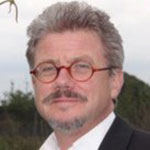
Biography:
Peters CJM is Director at Europa Ayurveda Centre.The European Ayurveda Centre (EAC) is an agricultural estate with treatment and research facilities specializing in traditional Ayurveda. The Centre was founded by the Ayurvedic doctors Dr. V.P. Mohana Kumari, Ing. Cornelis Peters, and Vighnesh Maharaj. Together they form the inspirational driving force behind this centre. Cornelis earned his M.D. at HBO University in 2003. He is a Promoter of Scientific Research on Medicinal Plants Enhancing People's life Coping with Lifestyle Diseases.
Abstract:
Diabetes mellitus, often simply referred to as diabetes, is a multi-system dysfunction in which a person has high blood sugar, either because the body does not produce enough insulin, or because cells do not respond to the insulin that is produced. Also, there are several factors that are not obvious from biological considerations alone. Therefore, the search for a single drug target to the reversal of all or majority of the aspects of the disease might not give the solution because biological systems are too complex to be fully understood through conventional and isolated experimentations, as they are not always linear. The Ayurvedic herbal formula MC contains a variety of herbal ingredients that incorporate synergistic, potentiative, agonistic, antagonistic pharmacological agents, and hence act on a variety of targets by various modes and mechanisms. Therefore, the therapeutic approach of MC is more holistic than regularly used Western medicines for DM2. There are significant changes in the system biology after the use of MC resulting in lowering blood sugar levels (glycosylated haemoglobin) and blood lipid levels (triglyceride, total cholesterol, Low Density Lipoprotein and High Density Lipoprotein) in DM2 patients. It is interesting to find out which plant compounds, including already proven health-promoting metabolites, are present in the 20 herbs comprising MC, which are cultivated using a traditional Indian method of natural fertilizer (Panchagavyam). The herbal medicine is analysed using a holistic, unbiased metabolomics approach and the system (patient) is analysed using a holistic unbiased approach by expression analysis of hundreds of genes and physiological parameters. Finally, the methods of cultivation are researched so that the homogeneity of components is maintained and that the composition of the herbal preparation is standardized as much as possible. For these studies research collaboration between Europa Ayurveda Centrum, Wageningen University (two departments), Canisius Wilhelmina Hospital, and Europroxima was made. EAC cultivated the plants, and made the herbal preparation. Europroxima tested on safety of the herbal material. WUR-PRI will do the metabolomics (compound analyses) of the plant material and the capsules. WU–Human Nutrition together with Canisius Wilhelmina Hospital worked as a research organization and clinical hospital, respectively, to execute the clinical trial. This project was subdivided into two distinguished parts and each of the parts has its own approach.In the part on the presence and quantification of (health-promoting) plant metabolites in the twenty selected herbal species, and the quantification of these metabolites and possible derivatives in the herbal preparation MC, the biochemical composition is analysed in an unbiased way via metabolomic profiling, screening thousands of compounds. A quality analysis is performed by analysing different batches of the herbal preparation for the identified metabolites in which batches will be compared on their compound composition. In addition, safety analyses on the possible presence of residues and bacterial pathogens are carried out.
James David Adams
University of Southern California School of Pharmacy, USA
Title: Proper pain treatment with plant derived medicines
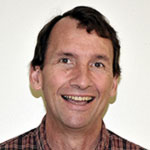
Biography:
Adams earned a PhD in Pharmacology from UC San Francisco in 1981. He has been a faculty member at the USC School of Pharmacy for over 27 years. He was a student of a Chumash Indian Healer for 14 years. He has written a book and many publications on California Indian Healing. He has over 240 publications.
Abstract:
Pain can best be treated in the skin, such as with cold, heat, acupuncture and plant derived liniments. The pain cycle starts in the skin with transient receptor potential cation channels on sensory afferent neurons. These cation channels are the most abundant pain sensors in the body and are most abundant in the skin. They are regulated by prostaglandins, resolvins, endocannabinoids and perhaps other lipid derived endogenous compounds. Prostaglandins are largely made by cyclooxygenase-2 that is induced in the skin during chronic pain conditions. Plant derived medicines are available that can be applied directly to the skin. The talk will discuss plant medicines that come from California Indian traditional healing practices. These medicines contain monoterpenoids that inhibit transient receptor potential cation channels and sesquiterpenes that inhibit cyclooxygenase-2. In general, monoterpenoids and sesquiterpenes cross the skin. Pain is inhibited by application of small amounts of these medicines where they are needed. This provides superior pain relief than oral nonsteroidal anti-inflammatory agents (NSAIDs) or oral opioids. These oral agents are used in large amounts and cause toxicity to internal organs. NSAIDs cause 100,000 ulcers in the US every year and at least 10,000 deaths. They also increase heart attacks and strokes. Opioids cause 14,000 deaths in the US every year from respiratory depression and seizures. The use of plant derived liniments has the potential to save many lives every year.
Hawa ZE Jaafar
Universiti Putra Malaysia, Malaysia
Title: Whole plant elicitation: a new approach toward enhanced production of plant secondary metabolites harvest index
Time : 04:10-04:30

Biography:
Hawa ZE Jaafar completed her PhD in 1995 from Nottingham University, United Kingdom in the area of Plant Environmental Physiology. She is very active both in environmental manipulation of herbal secondary metabolism research, and in community development of herbal materials and products. Currently, she is the Director of the University Community Transformation Centre (UCTC) UPM, and a member of the National Herbal Implementation Committee. She has published about 150 papers mostly in high impact journals, more than150 other articles in bulletin, monographs, books and chapters, and presented more than 130 papers nationally and abroad. She is very active in professional activities as a President, Vice President, Chief Editor and Editorial Member. She is also very involved in the development of Roadmap of the National Herbal Industry in Malaysia in 2010. She established the Controlled Environment System in Malaysia in 1991, and had assisted Sana’a University Yemen to establish the Protected Agriculture Centre (2006-2010).
Abstract:
Plants are remarkable source for the discovery of new products with medicinal importance and plant secondary metabolites are rich sources of bioactive constituents used in pharmaceutical industry, food additives, flavors, and other industrial materials. Plants are generally very responsive to biotic and abiotic factors known as elicitors in altering their physiological, biochemical and morphological properties. Elicitation is a process of induced or enhanced synthesis of secondary metabolites by the plants to ensure their survival, persistence and competitiveness. Elicitors are usually capable to induce various modes of plant defense including the production of ROS (reactive oxygen species), the hypersensitive response and the production of phytoalexins, i.e. antimicrobial secondary compounds. The induction of phytoalexin biosynthesis has gained special importance in biotechnological approaches as enhancers of plant-secondary-metabolite synthesis, and could play an important role in biosynthetic pathways of newly discovered enhanced biometabolites of commercial importance. Many of these compounds are of high value as therapeutics (anticancer) or otherwise biologically active agents. Although, increased production through elicitation of secondary metabolites from plant cell cultures has opened up a new area of research, the use has only had limited commercial success due to lack of understanding of how these metabolites are synthesized and high capital cost to set up the production. Whole plants elicitation grown in the field or raised under controlled environment, however, has demonstrated improved secondary metabolites production and enhanced plant growth and development. The paper discusses technique of elicitation and results on enhanced secondary metabolites harvest index of some tropical herbs that may spell future approach to production of quality herbal materials.
Richaritha Gundlapalli
Board Certified Integrative and Holistic Physician, USA
Title: Vitamin G: the medicinal aspects of green space and forest medicine (shinrin yoku)

Biography:
The presenter, Richaritha Gundlapalli MD, ABIHM, is a Board certified Integrative and Holistic Practitioner, with vast experience in holistic modalities - Ayurveda, Chinese medicine, Anthroposophic medicine, Energy medicine, Biodynamic farming. Her quest to find the source of the underlying causes of modern lifestyle diseases led her to explore intricacies of farming, humans/microbiome and human/nature interactions leading her to synthesize her findings under principle of Vitamin G.
Abstract:
In Modern lifestyle we are everyday faced with unprecedented amounts of stress and stress related health issues, ranging from hypertension, insomnia, burn out, just to name a few. One of the contributors of stress in modern life is living in an extremely toxic and artificial environment, far away from nurturing presence of nature and forest. As if on cue, there has been cutting edge research around the world that has been established immediate and high impact therapeutic nature of intimate engagement between human beings and their originally natural abode - "The forest". This presentation introduces the audience to the founding principles of “ShinrinYokuâ€, Japanese modality of forest medicine and also provides review of latest findings and suggested engagements for practitioners to support their patients. The presentation will also present a synthesis of other complementary modalities that can mitigate the modern lifestyle diseases and introduces the path breaking concepts of Vitamin G. The presentation will specifically aim to extend the understanding of natural medicine beyond the ingestible herbs rather focus on the forest medicine as a therapeutic and recuperative modality, based on the communication and energy exchange between natural elements and human beings.

Biography:
Seymour Koblin (born October 31, 1953) is an international author, composer, performer, holistic health practitioner/educator, speaker and the creator of three trademarked complementary health methods: Zen-Touch™ Shiatsu, Zen-Tone™ and Nutri-Journey™. Seymour Koblin began his path as a practitioner and educator of complementary holistic health methods after a near death experience in Toronto in 1977. He is the founder and director of two 501c3 non-profit organizations - the School of Healing Arts, founded in 1990, and the International Center for Healing Arts, founded in 2010. The International School of Healing Arts spreads his teachings throughout the USA, Europe and Mexico. All of his healing methods are based on teaching the body to regenerate itself through integrating each person’s unique balance of the forces of nature within their daily lives. Traditional Chinese Medicine applications of Nutrition, Herbs, Aromatherapy, Energetic Bodywork, Chi Exercises, Emotional Healing techniques and Intuitive development represent the focus of his work.
Abstract:
According to Traditional Asian Philosophy and specifically Chinese Medicine, healing on a deep level involves integrating the Forces of Nature: Yin/Yang-Gravity / Electromagnetic forces and the 5 Seasons more popularly called the 5 Elements into each person’s life. Every person embodies a unique manifestation of these movements. Understanding excesses and deficiencies according to one’s Constitution and Condition allows us to make recommendations for a person at the source of any symptom they present. The emotional tendencies of each movement will be described so participants can assess themselves and their clients. Emotions are the strongest form of energy available to our bodies. This workshop will teach us how to use emotions instead if them using us. Specific herbs categorized by their seasonally emotional effects can be used to tonify or disperse important emotional lessons and healing.
Henry I.C. Lowe
Medicanja Limited, W.I
Title: Medicinal Cannabis/ Ganja for Prevention & Treatment: A Case for Pain Management

Biography:
Henry Lowe, a scientist in medicinal chemistry, has contributed over 50 years in the fields of science, technology and health sciences nationally and internationally. He has earned the Order of Jamaica (2012), Commander of the Order of Distinction (1982), the Prime Minister’s National Medal in Science & Technology (2014), the Jamaica Observer Business Leader Award (2006) and the CCRP Living Legend Award (2012); and is the only Jamaican who is a member of the prestigious American Association for Cancer Research (AACR). He has discovered several bioactive molecules from Jamaican medicinal plants which are being developed for cancer therapy, diabetes and HIV/AIDS. He is also the holder of 3 patents in these areas. He has published over 22 books and has five in various stages of completion at this time. He has also published over 100 articles in the areas of science, technology and the health sciences for journals and the popular press. He was born in St. Andrew, Jamaica and was educated at Calabar and Excelsior High Schools, University of the West Indies, Mona (B.Sc. Hons.), University of Sydney (M.Sc.), Manchester University (Ph.D.), Bolton Institute of Technology England (Dip. Technical Education), Harvard University and M.I.T, U.S.A. (Post-Doctoral Studies). He is an Adjunct Professor in the Department of Medicine, University of Maryland School of Medicine, USA and Distinguished Adjunct Professor of Ethno-medicinal Chemistry, University of Technology, Jamaica.
Abstract:
The availability of Cannabinoids represents a relatively new nutraceutical/ pharmacological option which may form part of a multimodal treatment plan for acute and chronic pain. With increasing knowledge of the endocannabinoid system and compelling preclinical work supporting that cannabinoid agonists are analgesic, there is increasing attention on their potential role in pain management. A wide array of drugs ranging from analgesics (e.g. aspirin, acetaminophen and ibuprofen) to anti-migraine drugs to narcotics (opioids e.g. codeine and morphine), aim to lessen or in some cases stop pain. Undoubtedly, with the continued high incidences of pain, the efficacy of these drugs are challenged. It also raises concerns regarding long term substance abuse and dependence. Cannabinoids, as a medicinal alleviant for pain, has two-fold benefits in that it can provide relief and it can minimize the side effects of pain experienced as these may be less than those experienced with an analgesic drug or opioid. This paper is an exploration of Medicanja’s clinical research program and findings to date, that complements current studies and adds a regional perspective to the efficacy of cannabinoid extracts in the treatment and management of pain as a viable alternative to current treatment options.
A.V.Chandewar
P.Wadhwani College of Pharmacy, India
Title: Determination of pesticide residue in marketed hepatoprotective herbal formulations by capillary gas chromatography

Biography:
A.V.Chandewar is presently working as a Principal, P.Wadhwani College of Pharmacy, Yavatmal (M.S.) India and Dean, Faculty of Medicine, SGB Amravati University, Amravati, India. He did M. Pharm from RTM Nagpur University, Nagpur in 1989 (Gold Medalist) & Ph.D. in Pharmaceutical Sciences from SGB Amravati University, Amravati in 2007.He has total 25 years of teaching experience. Under his Supervision 8 students awarded by Ph.D, & guided to 56 PG students. He is associated with several professional bodies like APTI, IPA, ISP, ISTE, IHPA etc. He has published 60 research & 30 review articles in National and International journals and in a various conferences at National level. He has been awarded by Late Prof.G.B. Sing memorial Gold Medal being 1st Merit in Pharmachemistry in M.Pharm throughout University. (78th Convocation) He has been awarded by Samaj Ratna Award and Jewel of India award and presently awarded by Dr.S.G. Wadodkar Memorial teacher of the year award 2014 by APTI, MS branch. He is invited as resource persons in a various conference & seminar at National level. He worked as a Chairman of BOS & presently he is Member of Senate, Academic Council, BOE, BCUD of SGB Amravati University, Amravati, India
Abstract:
Pesticide residue refers to pesticides, their poisonous metabolic and degradation products and impurities that may remain on or in the organism, agricultural product, and the environment, after they are applied. Sometimes pesticide residue is unavoidable; however, if the residue exceeds the maximum limit or a tolerance, it will pose significant risk to humans and animals or other creatures in the ecological system, through the food chain. The Medicinal plants materials are liable to contain pesticide residue, which accumulate from agriculture practices such as spraying treatment of soils during cultivation and administration of fumigants during storage. It is therefore recommended that every country producing medicinal plant material should determine the pesticide residue. W.H.O. has established the maximum residue limit (MRL) in medicinal plants. In this research the pesticide residue in different Hepatoprotective herbal formulations were determined by Capillary gas chromatography. A Varian 6890N gas liquid chromatography equipped with a 230 m X O. 32 mm, I. d. glass column packed with SE-52, a constant current 63 Ni electron capture detector. The operating conditions were as follows: Injection volume was 2, u l; injector temperature, 200 °C; oven temperature, 160 °C; detector. Mobile Phase A: 0.1 % aqueous formic acid solution was used. From the result of determination of pesticide residue in marketed Hepatoprotective herbal formulation it was observed that the pesticide residues in formulations were present as in HP1 (Alpha HCH -0.19ppm), HP2 (diazinone-0.63ppm), HP3 (Captafol-0.39ppm, Trans Fluthrin-0.27ppm), HP4 (Beta-HCH-0.20ppm, Heptachlor -0.38ppm), HP5 (Alachlor-0.27ppm).which could produce ill effect on health of patient, using this herbal formulation.
Smriti Khatri
RamEesh Institute of Vocational and Technical Education, India
Title: Designing Development and evaluation of Floating Gastroretentive Microspheres of Acyclovir with piperine as a bioenhancer

Biography:
Smriti Khatri has completed her M. Pharm., from S.G.S.I.T.S College, Indore in 2003 and Ph.D. from J.N.U, Jaipur., India in 2012. She is working as Head of Department (Pharmaceutics) Associate Professor at RamEesh Institute of Vocational and Technical Education, Greater Noida, U.P., India. She has expertise in the formulation of dosage forms, Drug Regulatory Affairs and Intellectual Property Rights. Smriti has published more than 25 papers in national and international journals and participated in a number of Conferences.
Abstract:
Introduction: Acyclovir is an effective antiviral drug for the treatment of Herpes simplex virus. Oral bioavailability of Acyclovir is poor (15-20 %) because of low solubility and short half life. Piperine enhances the bioavailability of Acyclovir by increasing the absorption and by delaying the metabolism of the drug. Floating microspheres are prepared to retain the dosage form at the site of absorption and thus enhance the bioavailability. These are low-density system, which are having a sufficient buoyancy to float over the gastric contents and remain in the stomach for a prolonged period. While the system floats over the gastric content, the drug is released slowly at the desired rate. It results in increased gastroretentive time and reduces fluctuation in the plasma drug concentration. Methods: Ethyl cellulose and HPMCK4M were used as polymers for preparing microspheres and piperine was added as a bioenhancer to increase the bioavailability. The microspheres were characterized with respect to their morphology, particle size, encapsulation efficiency, production yield, in-vitro release and pharmacokinetic studies in rats. Result and discussion: The mean particle size was within range and showed spherical shape. Microspheres were having sufficient entrapment efficiency and floating ability and were directly proportional to the polymer concentration. Pharmacokinetic study in rats showed nearly two times higher AUC value of acyclovir for the microspheres with piperine (15614.13±6953.13 ng h/ml) as compared to drug solution (7552.33±3219.09 ng h/ml). In addition, Acyclovir microspheres showed the ability to maintain the acyclovir plasma concentration through 24 h.
Sanjay Bais
Pacific college of pharmacy, India
Title: Comparative determination of pesticide residue in Anti-diabetic herbal products marketed in India
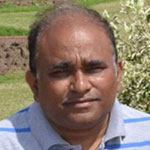
Biography:
Sanjay K.Bais has completed his B.Pharm and M.Pharm from Sant Gadge Baba Amravati University, Amravati (M.S.). He completed Ph.D in Pharmacy from PRIST University, Thanjavur, Tamilnadu. He is the Associate Professor in Faculty of Pharmacy, Pacific University, Udaipur, Rajasthan, a premier Educational Private University. He has published more than 33 papers in reputed journals and has been serving as a review member of repute journals. He authored four pharmacy books published by Lambert Publishing house, Germany.
Abstract:
Herbal formulations are getting popular throughout the world and commercialized extensively for various medicinal properties. WHO has emphasized the need for quality assurance of herbal products, including testing of pesticides residues. In view of W.H.O guidelines, poly herbal drugs used in herbal formulations were collected from local market, for testing pesticides residue. Therefore, in the present case, we have examined few local samples of certain herbal product. The Medicinal plants materials are liable to contain pesticide residue, which accumulate from agriculture practices such as spraying treatment of soils during cultivation and administration of fumigants during storage. It is therefore recommended that every country producing medicinal plant material should determine the pesticide residue. W.H.O. has established the maximum residue limit (MRL) in medicinal plants. In this research the pesticide residue in different Anti-diabetic herbal formulations were determined by Capillary gas chromatography. From the result of determination of pesticide residue in marketed Anti-diabetic herbal formulation it was observed that the pesticide residues in formulations were present as in AD1 (Dimethoate -0.59 ppm Methyl Parathion-0..48 ppm, Methyl Chlorpyrifos-0.59 ppm), AD2 (Methyl Parathion -0.49 ppm), AD3 (Methyl Parathion -0.39ppm), AD4 (Dicofol- 0.37 ppm), AD5 (Dicofol-0.27ppm).which could produce ill effect on health of patient, using this herbal formulation.
